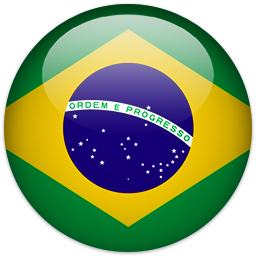Abstract
The territory of São Paulo contains, in its inland, different cultural landscapes, which were formed in the course of time and underwent profound changes in recent centuries in the face of: accelerated processes of replacement of the vegetation cover by the production of diverse goods, cattle rearing, and agriculture for export; massive influx of population groups coming from different regions of Brazil and of the world (about 70 ethnic groups); intensity of urbanization (within centuries XIX and XX); the complexity of the distribution systems (drovers roads, railways, highways, aviation), among others, which enabled the former captaincy, later a province and currently a state, to overcome the Serra do Mar mountain ridge (which had kept it isolated from the colonial dynamics over centuries XVI to XVIII), and to establish commercial and production bonds between rural regions and the coast. Particularly within the last 160 years, the intensity and strength of certain processes taking place largely outside the State area have proved themselves able to delete (ranging the boundaries between decimating and incorporating) the ancient presence of indigenous peoples, while diluting centenary marks of original enculturation (indigenous and european) to give rise to landscapes fully altered in their original economic, social, cultural and political bases. The portuguese expression "paulista", used to distinguish a population different due to its habits, language, customs and mixed ways of life, shortly started designating a population deformed by such an amount of cultural aspects, bonds and motivations now linked to transnational capital. In the study of the Metropolitan Region of Campinas we have found evidences of different landscapes.
References
BACELAR, C. de A. P., Brioschi L. R. (orgs). Na Estrada do Anhanguera: uma Visão Regional da História Paulista. São Paulo: Humanitas/CERU, 1999.
BRIOSCHI, Lucila Reis et al. Entrantes no Sertão do Rio Pardo: o Povoamento Da Freguesia de Batatais – séculos XVIII e XIX. São Paulo: CERU, 1991.
CUNHA, Manuela Carneiro da (org.). História dos Índios no Brasil. 2 ed. São Paulo: Companhia das Letras/FAPESP/Secretaria Municipal de Cultura, 1998.
DUTRA, Miguel. O Poliédrico Artista Paulista. São Paulo: MASP, 1981.
ELLIS JR, Alfredo. A Economia paulista no século XVIII. O ciclo do Muar, o ciclo do Açúcar. São Paulo, s/e, 1950.
GOULART, José Alípio. Tropas e Tropeiros na formação do Brasil. Rio de Janeiro: Conquista, 1961.
HOLANDA, Sérgio Buarque de. Caminhos e Fronteiras . Rio de Janeiro: José Olympio Editora, 1957.
HOLANDA, Sérgio Buarque de. Monções. 3ª edição ampliada. São Paulo: Brasiliense, 1960.
LEITE, Marcelo (org). Nos caminhos da biodiversidade paulista. São Paulo: Secretaria do Meio Ambiente, 2007.
MONTEIRO, John Manoel. Negros da Terra: Índios e Bandeirantes nas origens de São Paulo. São Paulo: Companhia das Letras, 1994.
MARTINS, José de Souza. Frente Pioneira – Contribuição para uma caracterização sociológica. ESTUDOS HISTORICOS, n.10, p.33-41, 1971.
MATOS, O. N. de. Café e Ferrovia. São Paulo: Pontes Editores, 1990.
MEMÓRIA URBANA: A grande São Paulo até 1940. São Paulo: Arquivo do
Estado/Emplasa/Imprensa Oficial, 2001.
MONBEIG, Pierre. Pioneiros e Fazendeiros de São Paulo. São Paulo: Hucitec/Polis, 1984.
PETRONE, Maria Thereza Schorer. A Lavoura Canavieira em São Paulo. São Paulo: Difel, 1968.
PETRONE, Pasquale. Aldeamentos Paulistas. São Paulo: EDUSP, 1995.
PINHEIRO, Niminon Suzel. Os Nômades. Etno-História Kaingang e seu contexto: São Paulo (1850-1912). Assis: Mestrado em História da UNESP, 1992.
QUEIROZ, Maria Isaura Pereira de. Bairros Rurais Paulistas. Livraria Dias Cidades, 1973.
SAINT-HILAIRE, Auguste de. Segunda Viagem a São Paulo e Quadro Histórico da Província de São Paulo. São Paulo: Comissão do IV Centenário da Cidade de São Paulo, 1954.
TAUNAY, Afonso E. História Geral das Bandeiras Paulistas. São Paulo: Imprensa Oficial, 1950.
A Labor e Engenho utiliza a licença do Creative Commons (CC), preservando assim, a integridade dos artigos em ambiente de acesso aberto.

